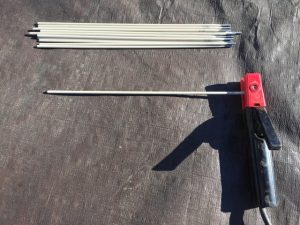The subject of tightening grub screws is central to troubleshooting discussions here, and I don’t think I ever shared my $.02 on this fairly simple subject, for fear of overcomplicating the simple act of tightening grub screws, lol.
Years ago I was having a lot of propellers fly off my rc aircraft using those grub screw style prop adapters (use genuine Hyperion collet adapters ftw). I stripped many threads torquing the cr*p out of them, tried red loctite, etc. This never happened with my RC car pinions, which only have one set screw. After so many reinstallations, it finally occurred to me why those pinions might be so much more reliable. Imagine what happens to the geometry of the shaft, bore, and screw ends when you tighten 2 set screws on a shaft. Both screw centerlines will be offset from the shaft centerline. Consider how this affects the tip of the screw; the loading will not be symmetric about the screw axis, which means torque and vibes can effectively act to turn the screw tighter or looser. Given any loading from the shaft, the result is one will tighten, and the other will loosen… guess which side wins as the metal starts to deform? OTOH with one set screw, the screw tends to center itself on the shaft (bore pulls it in to square). The result is the torque acting on the screw tip is now balanced about the screw axis. Hmm…
So I experimented on my aircraft by removing the second grub screw and tightening only one. Several years of flying later, this has proven to be a far more reliable way to use set screws, regardless if the shaft has a flatspot or not. A bonus advantage is, you have a spare screw and threaded hole if the first one ever strips out on you.
Ever since that experience, I’ve always remove any second grub screws and save them for later. Storing one screw lose in the hole isn’t safe, as it will eventually fall out and get stuck in something. I do this with all things that have 2 grub screws these days, including my mpcnc pulleys and screw adapter.
How about you guys… tightening 2 screws or 1?
